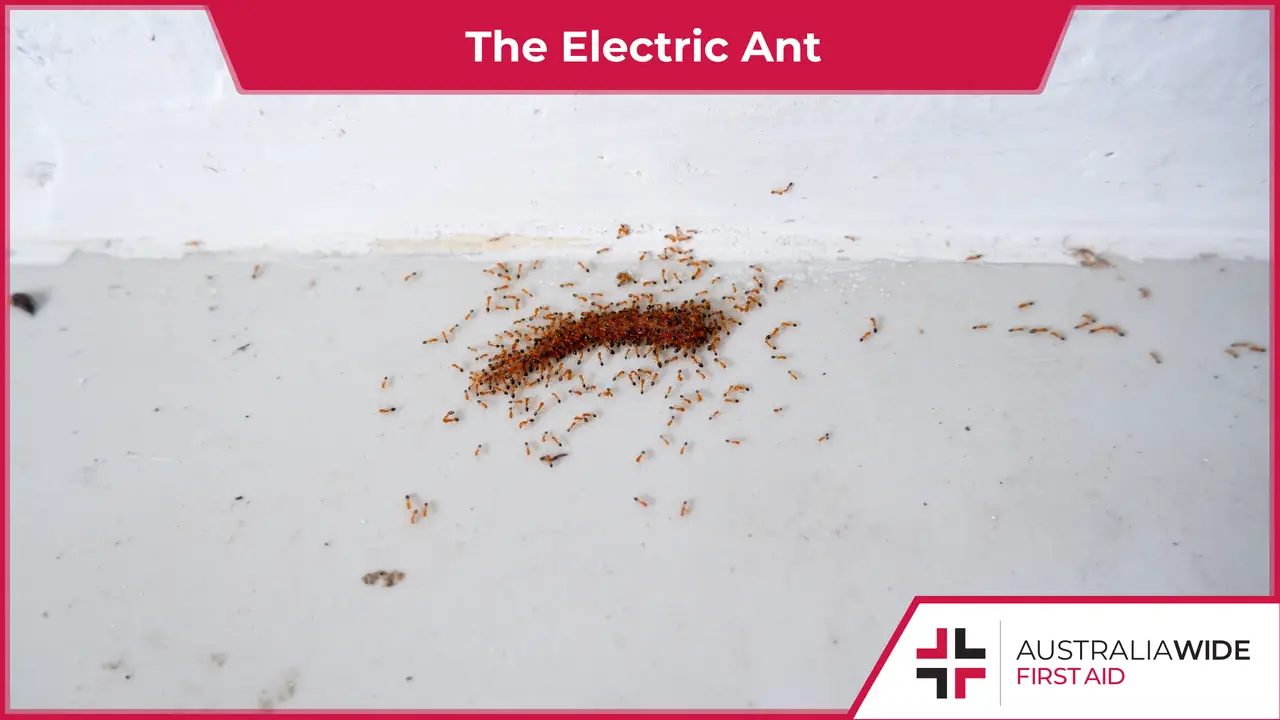First Aid for the Electric Ant


Electric ants are tiny, slow-moving insects that can be found in Cairns and surrounding areas.
Native to Central and South America, these ants are one of the world's worst invasive species and represent a major biosecurity hazard for Queensland.
Likewise, they have a painful sting that can blind pets and cause severe allergic reactions in humans.
As such, it is important to be wary of the Electric ant - continue reading for more information about their identifying characteristics and preferred habitat, and what to do if you encounter one.
Electric ants (wasmannia auropunctata) are golden-brown in colour and generally grow to just 1.5 mm long.
Due to their miniscule size, they are typically only spotted when they form distinct foraging lines alongside their equally slow-moving counterparts.
Unlike Fire ants, they are all the same size.
Electric ants can be found in the Cairns region.
Rather than building visible nests, they prefer to establish their colonies in pre-existing spaces with shade and a little moisture, including:
Electric ants were first detected in the Cairns region of north Queensland in 2006. They are yet to be detected elsewhere in Australia.
It is thought that they hitched a ride to Australia via ships and planes containing host materials, such as:
They have also invaded:
Electric ants represent an enormous threat to Australia's environmental, economic, and social health. For instance:
In light of their real and potential impacts on Queensland's environment and lifestyle, Electric ants are formally recognised as a category 1 restricted matter under the Biosecurity Act 2014.
They are also currently the focus of an Electric ant eradication program being coordinated by Biosecurity Queensland.
As such, if there are suspected Electric ants in your home or local community, you should contact Biosecurity Queensland or the Exotic Plant Pest Hotline. Their contact details can be found on this website.
If you witness a sting from an Electric ant:
Found in the Cairns region, the Electric ant is one of the world's worst invasive species.
Not only do they spell trouble for agricultural industries, but they also have a painful, long-lasting sting that can blind animals and cause severe allergic reactions in humans.
If you suspect an Electric ant infestation in your home or local community, you should contact the relevant authorities to assist with their efforts in eradicating Electric ants. And if you sustain a sting from an Electric ant, take care to manage your symptoms with a cold compress.
To learn more about identifying and treating a host of different insect stings, book a First Aid course with Australia Wide First Aid today.

March 11, 2025
Darwin, the tropical capital of Australia’s Northern Territory, is home to a rich diversity of wildlife - including an impressive array of spiders. From the sprawling webs of golden orb-weavers to the cryptic camouflage of trapdoor spiders, these arachnids play a vital role in the local ecosystem. While some may inspire fear, the majority are harmless and even beneficial, helping to control insect populations.

September 4, 2024
Cat bites, while often underestimated, can lead to serious health complications if not treated promptly and properly. Cats' mouths harbour a variety of bacteria that can cause infections in humans.

April 1, 2024
Encounters with wildlife can often be thrilling, but when it comes to the creature known as the drop bear, the experience can quickly turn dangerous. A sharp increase in recent attacks prompts the need for understanding proper first aid procedures in case of an attack.